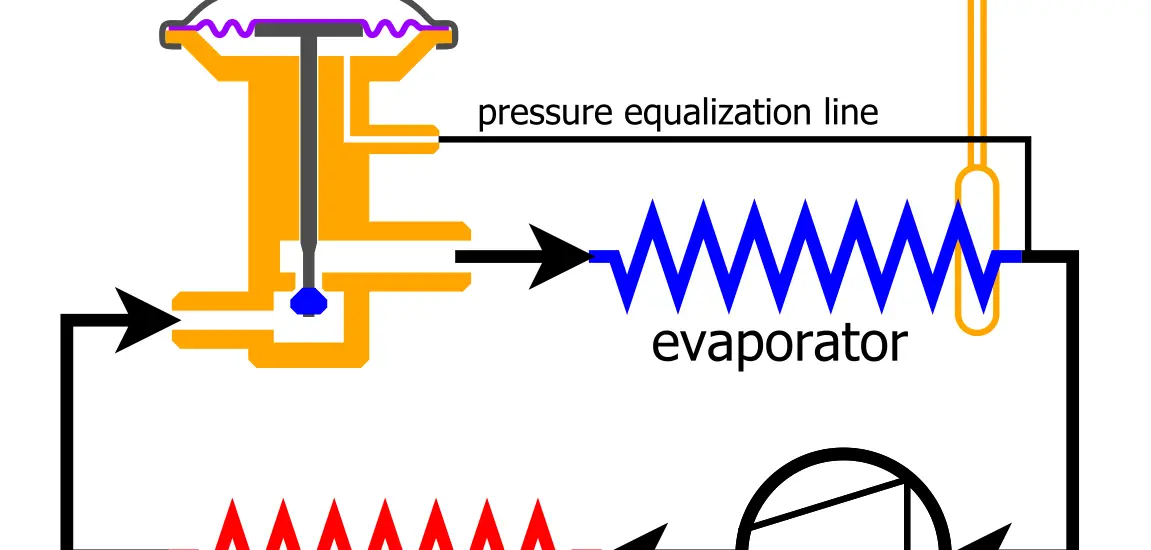Checking superheat with TXV is a fundamental skill in the field of refrigeration and HVAC services. Whether you are a seasoned technician or just starting out, this guide offers a step-by-step approach to understanding and mastering this process.

Table of Contents
Assembling Your Toolkit
For a successful procedure in checking superheat with TXV, having the right tools is a must. Here is a list of tools you will need:
Thermometer: To measure the temperature accurately.
Pressure Gauge: For taking precise pressure readings.
Manifold Set: Essential for gauging the pressure and temperature simultaneously.
Check out this Lichamp A/C Diagnostic Manifold Gauge Set listed on Amazon. It works for R134a, R22, R12, and R502.
Safety Gear: Ensure to have safety glasses and gloves to protect yourself during the process.
Steps to Checking Superheat with TXV
In the critical endeavor of checking superheat with TXV, each step carries immense importance. Here, we will delve into each phase to grant you a thorough understanding, guiding you to perform this task with precision and safety.
Ensure Safety
Your safety is paramount. Before you start, ensure that the power supply to the unit is turned off to prevent any electrical accidents.
Equipping yourself with safety glasses will protect your eyes from any refrigerant that might escape during the procedure. Gloves will shield your hands from potential cuts and burns.
These safety measures are not just precautionary but vital in securing your well-being throughout the task.
Inspect the TXV
The Thermal Expansion Valve (TXV) is a precise instrument regulating the flow of refrigerant into the evaporator. Before delving into any technical measurements, conduct a visual inspection of the TXV.
Check for any obvious damages such as leaks, corroded parts, or loose connections.
Addressing these initial issues can sometimes resolve the problem without further intervention.
Measure the Pressure
To get an accurate understanding of the system’s functioning, you need to measure the pressure at the suction line.
To do this, locate the suction line – typically a large copper pipe, and attach your pressure gauge to it. The pressure gauge should be of good quality to ensure precise readings.
Note down the pressure reading, which is usually measured in PSI (Pounds per Square Inch). This value is crucial as it will be used in later calculations.
Measure the Temperature
Following the pressure measurement, the next step is to gauge the temperature at the suction line. Using a reliable thermometer, take the temperature reading of the suction line.
Ensure to measure at a point close to where you took the pressure reading to get a consistent data point. Make a note of this temperature reading as it forms the baseline for calculating the superheat.
Calculate the Superheat
Now that you have both the pressure and temperature readings, you can proceed to calculate the superheat. Superheat is calculated using the formula: Superheat = Suction Line Temperature – Suction Saturation Temperature.
The suction saturation temperature can be found using a pressure-temperature chart, where you find the corresponding temperature to the pressure you recorded earlier.
Subtract this value from the suction line temperature that you noted down to find the superheat value.
It is crucial to achieve the correct superheat value to ensure the system operates efficiently and to prevent any damage to the compressor.
Check out these other articles…
What is TXV Valve? Comprehensive 411 Guide
How Does a TXV Work? Your Easy 411 Guide
When is a TXV Valve Needed: Comprehensive 411 Guide
Function of Thermostatic Expansion Valve in Refrigeration System
TXV vs Piston: Which Metering Device Should You Choose?
Identifying and Troubleshooting Common Issues
During the process, you might face certain issues such as fluctuating readings or discrepancies in the values. It is essential to know how to troubleshoot common problems to ensure accurate results. Be prepared to inspect for leaks, blockages, or other issues and know how to address them effectively.